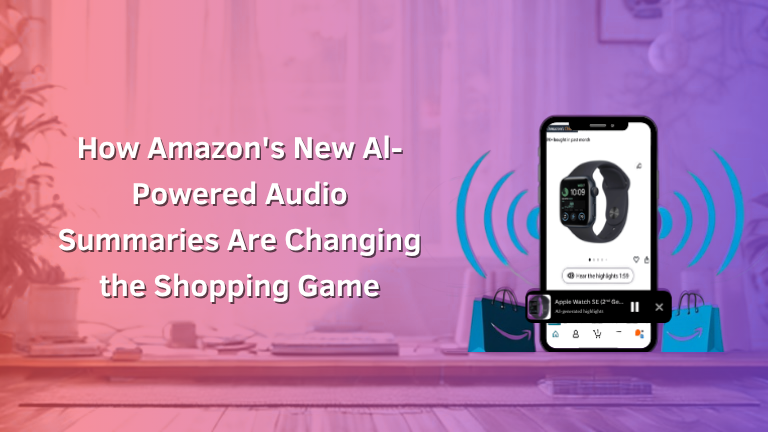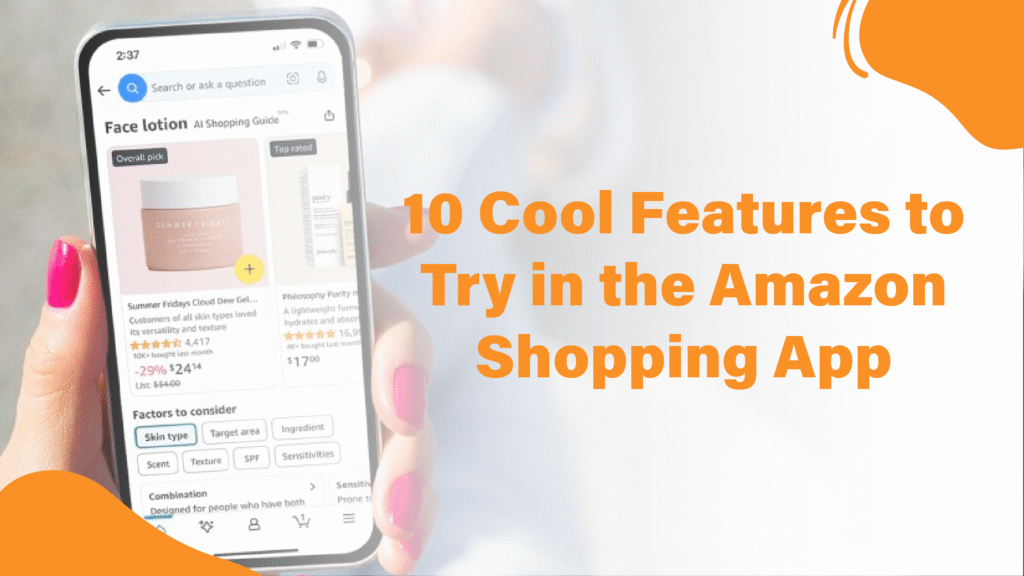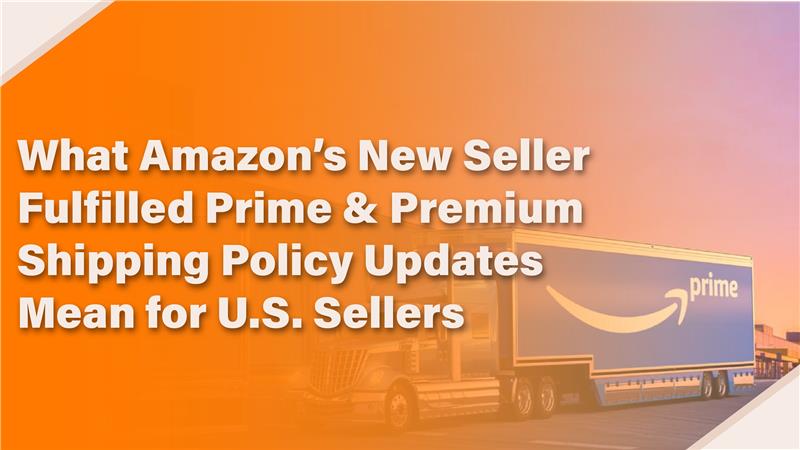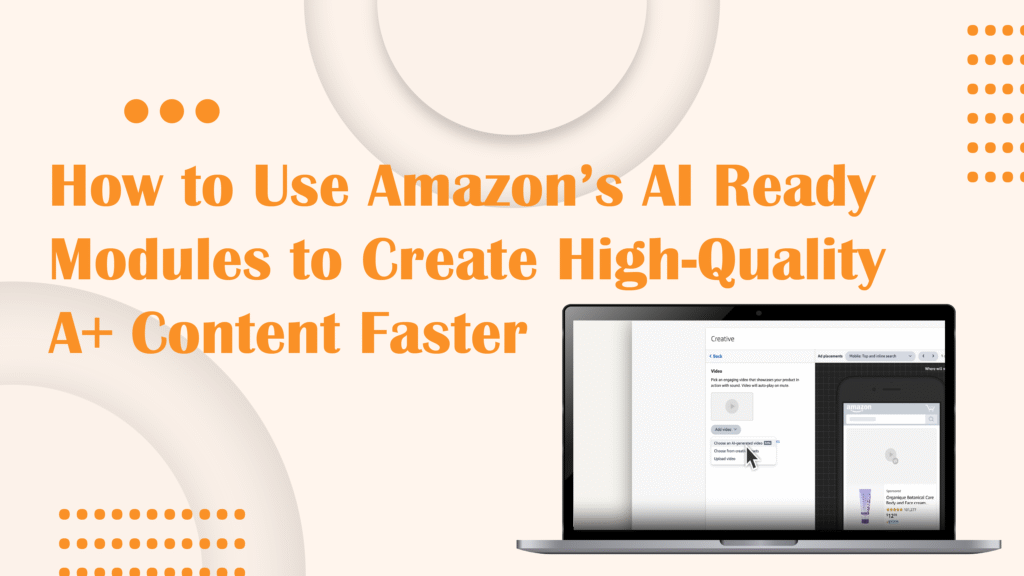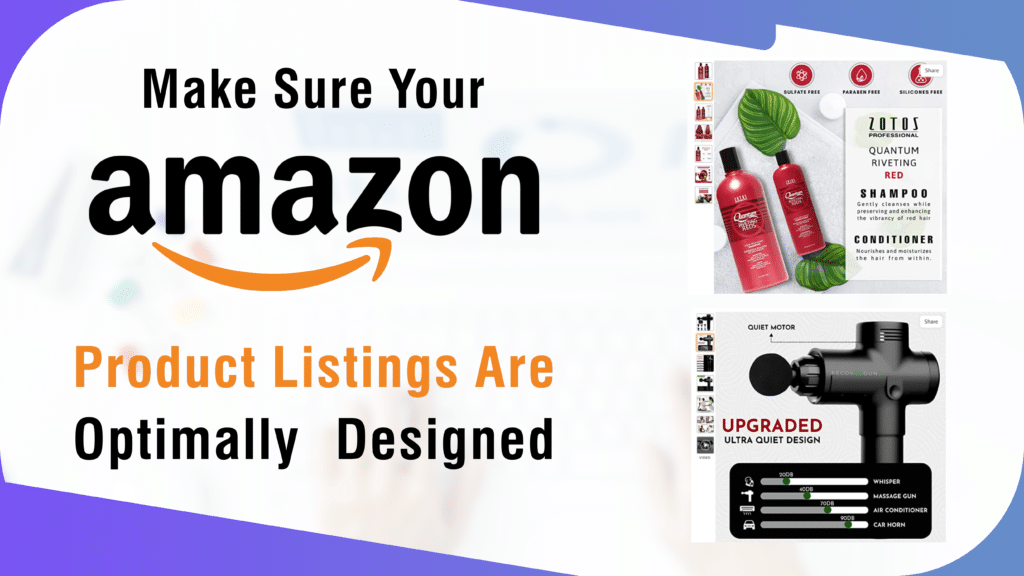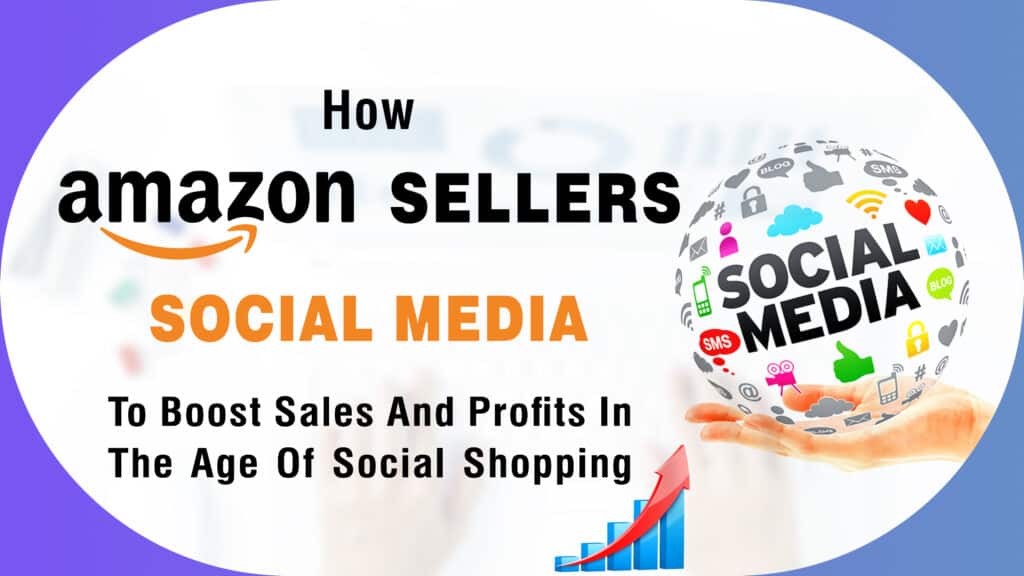Amazon’s mobile app is more than just a platform for making purchases. It’s packed with innovative features that can transform the way you shop, discover products, and even engage with customers. From AI-powered guides to augmented reality (AR) tools, Amazon’s Shopping app is constantly evolving to enhance the shopping experience. As an Amazon seller, staying up-to-date with these features can help you boost product visibility, engage customers, and improve your sales. Let’s dive into 10 cool features of the Amazon Shopping app that you may not know about, but definitely should. 1. Shopping Guides (AI-Powered) Shopping for unfamiliar products can be overwhelming. Shopping Guides, powered by generative AI, help simplify product research by providing tailored product recommendations. Amazon uses Rufus, its AI-powered assistant, to provide shopping guidance on over 100 product types. This feature helps you find the right products faster while boosting the chances of your product appearing in front of the right customers. 2. Interests (AI-Powered Product Discovery) Amazon’s Interests feature takes product discovery to the next level. It helps customers find products based on their passions, preferences, and price limits. Customers create personalized shopping prompts using everyday language, and Amazon’s AI scans the store to notify them about relevant products, restocks, and deals. For sellers, this means more personalized visibility for your products. 3. View in 3D One of the challenges of shopping online is the inability to inspect products up close. Amazon’s View in 3D feature changes that by providing customers with interactive, 3D models of millions of products. Shoppers can rotate, zoom in, and inspect your product from every angle. This tool is perfect for sellers who want to provide a more engaging, informative product experience. 4. See It On Your Model (AI-Powered Fit Review) See It On Your Model leverages AI technology to let customers visualize how clothing and accessories will look on a model with similar size, body shape, and skin tone. This feature helps customers shop with confidence, reducing returns and improving satisfaction. If you sell fashion or accessories, make sure to take full advantage of this tool to enhance customer confidence in their purchases. 5. Find on Amazon Have you ever seen a product elsewhere but didn’t know where to find it? Amazon’s Find on Amazon feature helps shoppers easily locate similar products to those they see on websites or social media platforms. Simply share an image, and Amazon will display similar items on their platform. This feature is a great opportunity for sellers to have their products discovered without shoppers even needing to know your exact brand or product name. 6. Amazon Lens Ever wanted to buy an item you saw in person, but didn’t know where to get it? With Amazon Lens, customers can now take a picture or scan a barcode to find exact matches or similar items. This feature is incredibly useful for buyers who want to shop more intuitively and quickly. Amazon Lens is an excellent tool to increase your product’s discoverability when customers are looking for exact matches or related items. 7. Virtual Try-On (Augmented Reality) Nothing helps customers make a purchase decision like seeing how the product looks on them. Amazon’s Virtual Try-On feature uses augmented reality (AR) to help customers try on products like sunglasses, lip colors, and eyeshadow virtually. This feature reduces uncertainty and improves conversions—perfect for fashion and beauty sellers. 8. View in Your Room (AR Furniture Shopping) Buying furniture online can be tricky, especially when it comes to size and fit in your space. View in Your Room allows customers to use AR technology to see how furniture, décor, and even smaller items like lamps or coffee makers will fit into their room. This feature helps ensure customers get the right fit and feel more confident about their purchases. 9. Consult-a-Friend When shopping for new products, sometimes a second opinion makes all the difference. Consult-a-Friend allows customers to share a product with their friends and get feedback—via comments or fun emoji reactions. This social shopping feature can encourage engagement with your products, especially when friends have the chance to provide input or reassurance before purchase. 10. Skincare Quiz With so many skincare products available, how do you know which one is right for you? Amazon’s Skincare Quiz helps customers figure out which products match their skin type. By answering a few simple questions, shoppers receive tailored recommendations, making the decision process easier. As a seller, this feature can drive more personalized product recommendations and boost sales for your skincare line. How to Leverage These Features for Your Amazon Store 1. Optimize for AR & 3D Features If you sell products like furniture, fashion, or accessories, make sure to take advantage of View in 3D and View in Your Room to give shoppers a better buying experience. 2. Get Featured in Shopping Guides & Interests Optimize your product listings for relevant keywords so they can be featured in AI Shopping Guides and Interests—increasing your product’s visibility with interested buyers. 3. Promote Your Products on Social Media Encourage customers to use Find on Amazon or Consult-a-Friend to share and seek opinions on your products, increasing social proof and engagement. 4. Use Virtual Try-On and Fit Review If you sell fashion or beauty products, enable Virtual Try-On and See It On Your Model features to help customers visualize how your products will look on them, increasing conversions. Amazon’s AI-powered features are designed to make shopping easier, faster, and more engaging. By using tools like 3D product views, virtual try-ons, and AI-driven recommendations, sellers can improve the shopping experience for their customers and boost sales. By leveraging these features, your products will stand out, and shoppers will feel more confident in their purchases. As an Amazon seller, now is the time to tap into these cutting-edge tools to enhance your listings, engage with customers, and increase your sales potential. Ready to optimize your Amazon store with AI-powered features? Contact Big Internet Ecommerce today to get started with integrating these features into your listings




